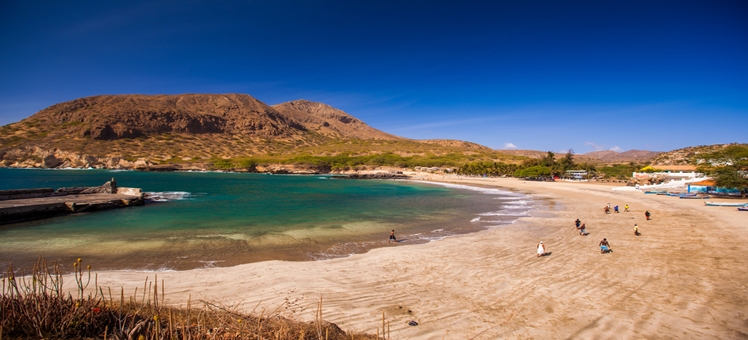
An incredibly diverse archipelago of 10 tropical islands, Cape Verde is a paradise destination which is only just beginning to embrace tourism. Isolated 350 miles off the west coast of Africa, the volcanic country has strong ties to both the continent and Portugal, thanks to its colonial past. Cape Verde’s history has created a vibrant and unique culture on these staggeringly beautiful islands – one which you can discover on a magical holiday here.
BeachesCape Verde is famous for its postcard-perfect stretches of milk-white sand, particularly on the islands of Boa Vista and Sal. Strewn with waving coconut palms and gently abraded by luminous ocean, these beaches offer the epitome of paradise, and you won’t find better anywhere else on the globe. For something a little more unique, Fogo features beaches of black sand; a nod towards the island’s volcanic heritage, these striking sands were originally lava and are a definite contrast to the pale shades of other Cape Verde shores.
Local culture and music
The archipelago is an example of a Creole culture, with mixed ethnicities creating unique cuisine, handicrafts and music on the islands. African traders are a common sight on the streets and in the plethora of markets, hawking their colorful wares. Stage plays are a big part of entertainment in Cape Verde, and a theater festival takes place every summer in Mindelo. This town is seen as a ‘cultural center’ of the country, and also boasts a thriving music scene, with the guitar-driven morna music spilling from bars.
Water sports
The range of water sports available in Cape Verde is endless. The islands boast ideal conditions for kite and wind surfing, and are fast becoming one of the world’s premier destinations for these sports. Other ocean activities in Cape Verde include big game fishing, jet-skiing and sailing. You can also explore under the sea; many of the islands are a veritable diver’s dream, with several tour companies taking boats out to wrecks and reefs. If you prefer to stay dry, there’s always shark or whale-watching on a chartered boat.
Colonial history
Following its discovery by the Portuguese in the 15th century, Cape Verde became a key player in the Atlantic trade routes. For three centuries, the archipelago was a base for the transatlantic slave trade, with a population slowly growing from freed slaves, Portuguese prisoners and wealthy emigrants. Cape Verde’s past as a Portuguese colony can be seen in the bright European-styled architecture of Sao Filipe and Mindelo, while its dark history of slavery is hidden in the preserved town of Cidade Velha.
Volcanic scenery
Although many of the islands exhibit vastly different landscapes and scenery, they were in fact all created by volcanic activity. The only currently live volcano is Pico do Fogo, on the island of the same name; this 2829m monster last erupted in 1995, and a community of Cape Verdeans actually live inside one of its craters! Santo Antão is another island that bears the beautiful scars of volcanic activity; this striking landscape spans lush valleys and breathtaking ravines – perfect for hiking holidays, particularly in the Paul Valley.